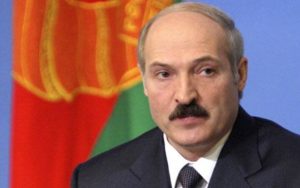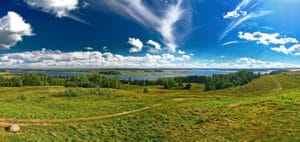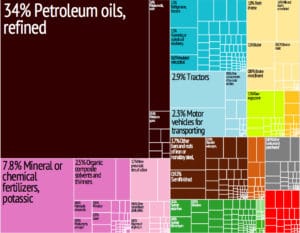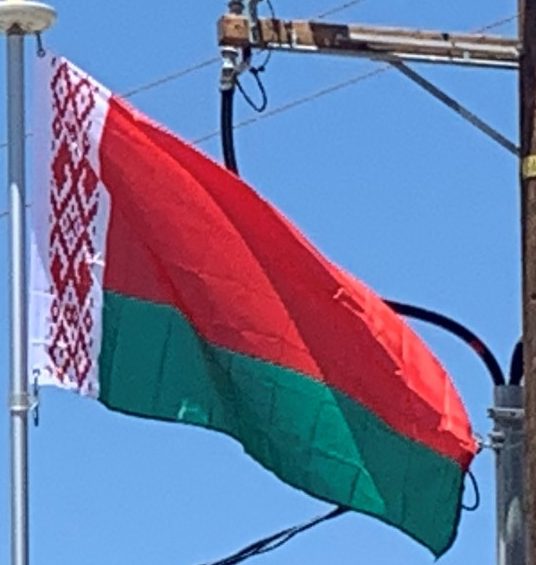
In 2019, Lukashenko had bilateral talks in Sochi with Russian president Vladimir Putin and declared that their two countries “could unite tomorrow, no problem.” An idea backed by Putin for years, observers have labeled the potential plan a scheme by Putin to remain in power beyond 2024. However, political scientist Mikhail Vinogradov explained that “Lukashenko will play tough to the public while trying to look weak in front of Putin,” and the Carnegie Moscow Center’s Artyom Shraibman suggested that “Moscow will most likely fail to find its base among Belarusians.”
Geography:
Belarus extends from north to south 350 miles and from west to east is 400 miles. It is landlocked, relatively flat, and contains large tracts of marshy land. About 40% of Belarus is covered by forests.
Many streams and 11,000 lakes are found in Belarus. Three major rivers run through the country: the Neman, the Pripyat, and the Dnieper. The Neman flows westward towards the Baltic sea and the Pripyat flows eastward to the Dnieper; the Dnieper flows southward towards the Black Sea.

The highest point is Dzyarzhynskaya Hara (Dzyarzhynsk Hill) at 1,132 feet, and the lowest point is on the Neman River at 295 feet. The average elevation of Belarus is 525 feet above sea level.
Economy:
In 2014 the share of manufacturing in GDP was 37%, more than two thirds of this amount falls on manufacturing industries. The number of people employed in industry is 32.7% of the working population. At the time of the dissolution of the Soviet Union in 1991, Belarus was one of the world’s most industrially developed states by percentage of GDP as well as the richest CIS member-state.
In 2015, 39.3% of Belarusians were employed by state-controlled companies, 57.2% were employed by private companies (in which the government has a 21.1% stake) and 3.5% were employed by foreign companies. The country relies on Russia for various imports, including petroleum. Important agricultural products include potatoes and cattle byproducts, including meat. In 1994, Belarus’s main exports included heavy machinery (especially tractors), agricultural products, and energy products. Economically, Belarus involved itself in the CIS, Eurasian Economic Community, and Union with Russia.

In the 1990s, however, industrial production plunged due to decreases in imports, investment, and demand for Belarusian products from its trading partners. GDP only began to rise in 1996; the country was the fastest-recovering former Soviet republic in the terms of its economy.
Since the disintegration of the Soviet Union, under Lukashenko’s leadership, Belarus has maintained government control over key industries and eschewed the large-scale privatizations seen in other former Soviet republics.
In 2006, Belarus’s largest trading partner was Russia, accounting for nearly half of total trade, with the European Union the next largest trading partner, with nearly a third of foreign trade. As of 2015, 38% of Belarusian exported goods go to Russia and 56% of imported goods come from Russia.
Transportation:
Railways:
Rail transport in Belarus is operated by Belarusskaya Chyhunka with a total of 3,425 miles of track, of which 543 miles is electrified.
